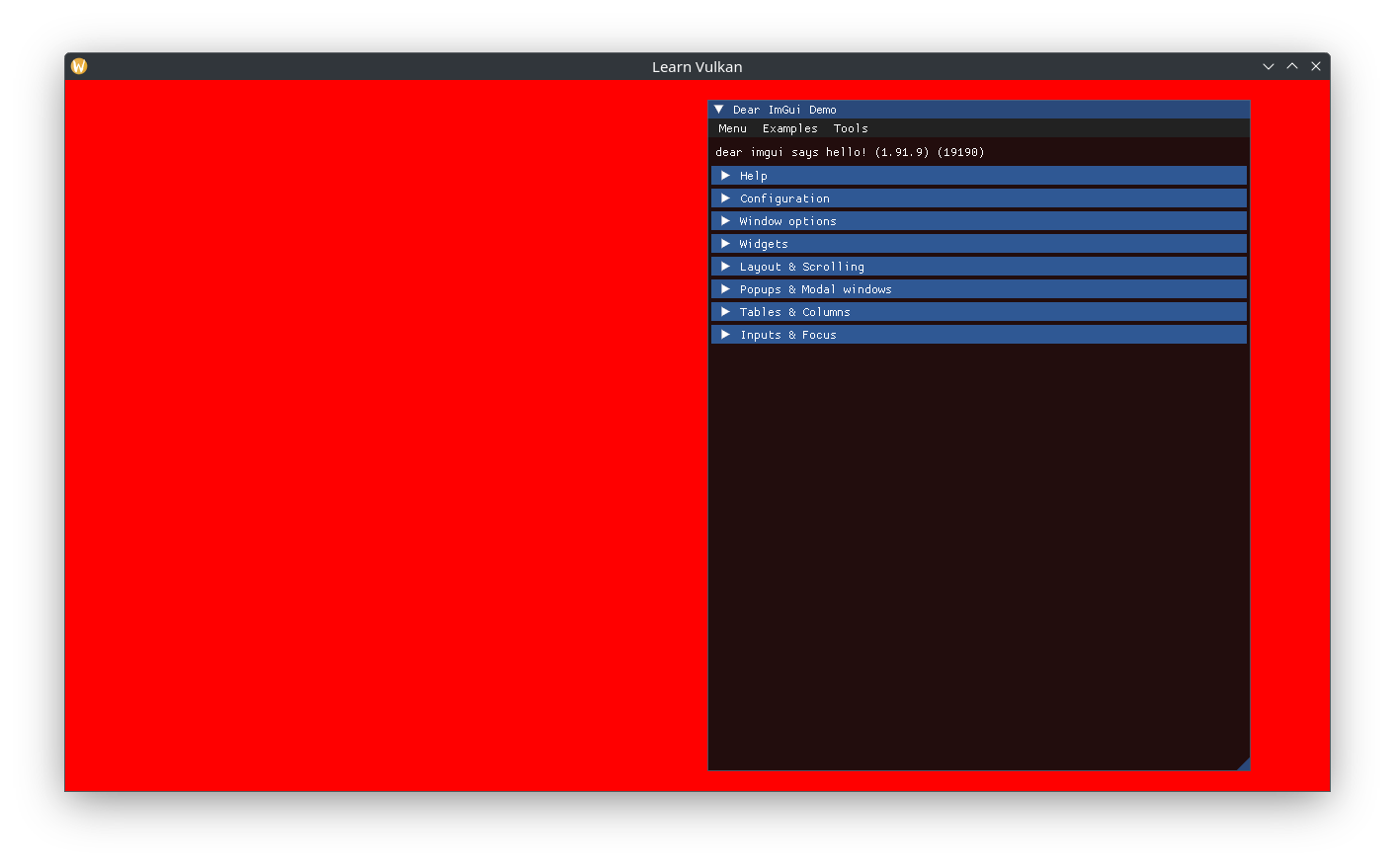ImGui Integration
Update Swapchain to expose its image format:
[[nodiscard]] auto get_format() const -> vk::Format {
return m_ci.imageFormat;
}
class App can now store a std::optional<DearImGui> member and add/call its create function:
void App::create_imgui() {
auto const imgui_ci = DearImGui::CreateInfo{
.window = m_window.get(),
.api_version = vk_version_v,
.instance = *m_instance,
.physical_device = m_gpu.device,
.queue_family = m_gpu.queue_family,
.device = *m_device,
.queue = m_queue,
.color_format = m_swapchain->get_format(),
.samples = vk::SampleCountFlagBits::e1,
};
m_imgui.emplace(imgui_ci);
}
Start a new ImGui frame after resetting the render fence, and show the demo window:
m_device->resetFences(*render_sync.drawn);
m_imgui->new_frame();
// ...
command_buffer.beginRendering(rendering_info);
ImGui::ShowDemoWindow();
// draw stuff here.
command_buffer.endRendering();
ImGui doesn't draw anything here (the actual draw command requires the Command Buffer), it's just a good customization point for all higher level logic.
We use a separate render pass for Dear ImGui, again for isolation, and to enable us to change the main render pass later, eg by adding a depth buffer attachment (DearImGui is setup assuming its render pass will only use a single color attachment).
m_imgui->end_frame();
// we don't want to clear the image again, instead load it intact after the
// previous pass.
color_attachment.setLoadOp(vk::AttachmentLoadOp::eLoad);
rendering_info.setColorAttachments(color_attachment)
.setPDepthAttachment(nullptr);
command_buffer.beginRendering(rendering_info);
m_imgui->render(command_buffer);
command_buffer.endRendering();
